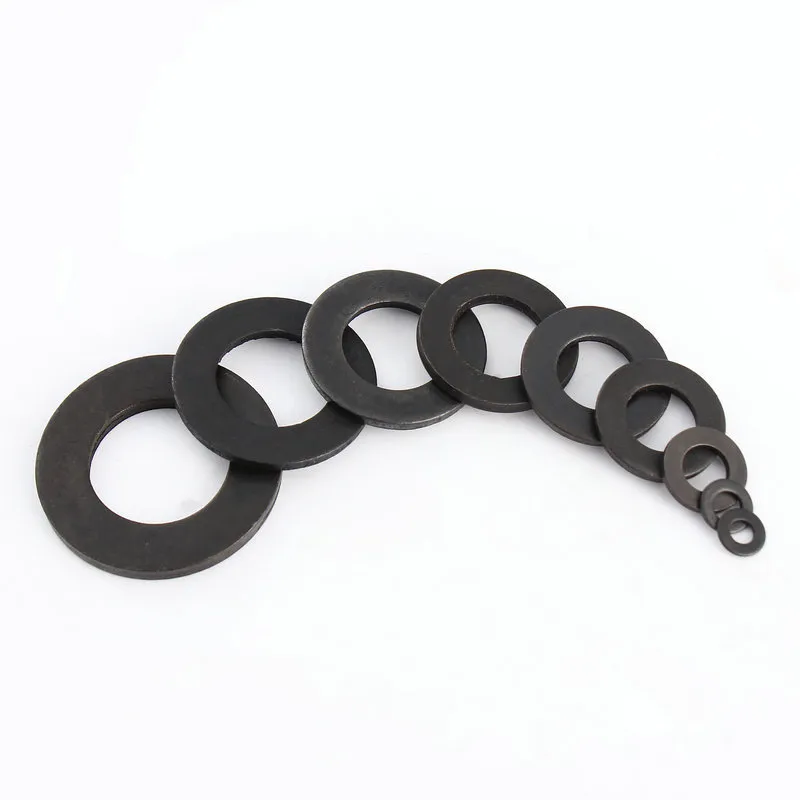

m5 plain washer
Dec . 16, 2024 03:00 Back to list
m5 plain washer
Understanding M5 Plain Washers Essential Components in Engineering and Construction
In the world of engineering and construction, even the smallest components play a critical role in ensuring the success and longevity of a project. One such small yet significant item is the M5 plain washer. This article delves into the characteristics, applications, and benefits of M5 plain washers, highlighting their importance in various mechanisms and structures.
What is an M5 Plain Washer?
An M5 plain washer is a flat, thin disk made of metal or plastic with a central hole designed to fit over a bolt or screw that has an M5 thread. The M indicates that it is a metric-sized washer, while 5 represents the nominal diameter of the inner hole in millimeters. Plain washers are generally used to distribute the load of a threaded fastener such as a bolt or nut over a larger area and to prevent damage to the material being fastened.
Material Composition
M5 plain washers can be made from various materials to suit different applications. Common materials include
1. Steel Often galvanized or coated to resist corrosion, steel washers are suitable for outdoor and load-bearing applications. 2. Stainless Steel Known for its corrosion resistance and durability, stainless steel washers are ideal for use in harsh environments, such as marine or chemical settings. 3. Plastic or Nylon Lightweight and resistant to chemical damage, plastic washers are often employed in electrical applications or areas where metallic conductivity must be avoided.
Applications of M5 Plain Washers
M5 plain washers are versatile components found in numerous industries, including
m5 plain washer

1. Construction In building projects, M5 washers are commonly used to secure framework, beams, and other structural elements, ensuring stability and strength. 2. Automotive Automotive engineering utilizes M5 washers in various applications, including assembling parts of engines and other critical components, where balance and support are necessary. 3. Electronics M5 washers can be found in electronic devices as insulators, preventing electrical connections from shorting out and ensuring safe operation. 4. Aerospace In the aerospace sector, M5 washers contribute to the structural integrity of aircraft, where every component must endure extreme conditions.
Benefits of Using M5 Plain Washers
The implementation of M5 plain washers comes with several advantages
1. Load Distribution By spreading the load over a wider area, plain washers reduce the possibility of material deformation, thereby enhancing the longevity of bolted connections. 2. Protection Against Damage They safeguard the surface of the material being fastened, reducing the risk of wear and tear that could arise from direct pressure. 3. Prevention of Loosening Washers can help prevent nuts and bolts from loosening due to vibrations by providing friction that helps keep them in place. 4. Improved Stability In mechanical assemblies, the use of washers contributes to overall stability, creating a more secure connection between components.
Selection Criteria
When choosing M5 plain washers, several factors should be considered
1. Material The choice of material must match the application to ensure durability and resistance to environmental factors. 2. Thickness A thicker washer can provide better load distribution, but should be selected based on the specific requirements of the project. 3. Finish The surface finish of the washer can affect its performance and compatibility with other materials, especially in corrosive environments.
Conclusion
In summary, M5 plain washers serve an essential function in various engineering and construction applications. Although they may seem insignificant at first glance, their ability to distribute loads, prevent damage, and enhance stability cannot be overstated. As industries continue to evolve, the development of better materials and designs for washers will only increase their effectiveness in meeting the demands of modern construction and engineering projects. Understanding their function and applications is crucial for anyone involved in making components that require reliable fastening solutions, underscoring the importance of even the simplest components in the intricate web of engineering.
Latest news
-
High-Strength Hot-Dip Galvanized Bolts-Hebei Longze|Corrosion Resistance&High Strength
NewsJul.30,2025
-
Hot Dip Galvanized Bolts-Hebei Longze|Corrosion Resistance&High Strength
NewsJul.30,2025
-
Hot Dip Galvanized Bolts - Hebei Longze | Corrosion Resistance, High Strength
NewsJul.30,2025
-
High-Strength Hot Dip Galvanized Bolts-Hebei Longze|Corrosion Resistance, Grade 8.8
NewsJul.30,2025
-
Hot Dip Galvanized Bolts-Hebei Longze|Corrosion Resistance,High Strength
NewsJul.29,2025
-
High-Strength Hot Dip Galvanized Bolts - Hebei Longze Metal Products Manufacturing Co., Ltd.|corrosion resistance&high strength
NewsJul.29,2025

